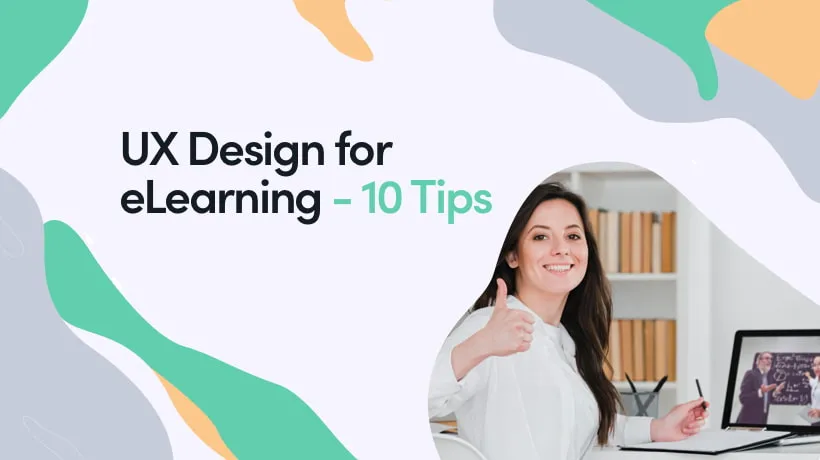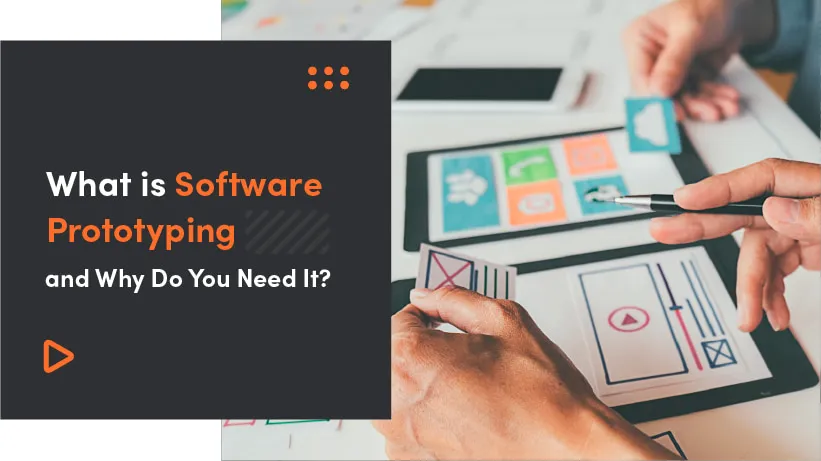There is no doubt that eLearning provides many benefits over traditional learning like constant availability, cost reduction and enhanced collaboration.
According to Bandon Hall Group found study, eLearning takes from 40 to 60% less time than traditional learning.
A well-designed UX can greatly influence the training effectiveness. For example, a website with low usability is not going to attract many customers. Research shows that user interface and interaction design decisions significantly affect how well users learn. Without it, learners will get lost, frustrated and distracted.
Do you feel like your eLearning platform needs some improvements? Or are you in the process of designing an online learning system? How does the UI and the UX make or break your LMS? Read this article to find out how to better your LMS web and mobile application.
10 tips on how to improve your LMS
According to PWC’s Future of Customer Experience study, customers across a wide variety of industries said they were willing to pay as much as a 16% premium for great customer experience. Let’s discuss some ways in which you can improve your eLearning software.
1. Learner-centred UX design
Human beings respond to experiences and learn from them. This is why a learner-centred UX design is crucial. According to Jonassen (1995) there are four learner-centred principles:
- context - learning task should have real-world application. This allows learners to connect personally with what they are learning.
- constriction - learners should be able to link their own experiences and prior knowledge with new learning.
- collaboration - problem-solving scenarios allow learners to develop, test and analyze their ideas while being exposed to others’ opinions.
- conversation - communication with and within learners is essential to effective eLearning courses. They should spend time in conversation while planning and making sense of new learning

There is a notion of learning experience design which focuses on the learner and learning environment. A valuable learning experience can be achieved through sharing a teaser or inspirational item to get participants thinking about the big ideas of the session, personalizing the content to create a sense of ownership and connecting personal experience to content.
2. Make navigation as easy and quick as possible
One of the most important parts of eLearning design is navigability. Well-designed navigation provides access to information so we should use familiar, straightforward and simple controls. A focus on navigation also improves engagement and participation so learners can concentrate on absorbing information rather than how to access next activities. This all can improve knowledge assimilation and retention. Ease of navigation allows learners to fully absorb the information and move through the course at their own pace.

3. Set intermediate goals - gamification, motivation stickers
A progress bar is a graphical control element on the interface used to visualize the progress. For eLearning, progress bars can be used to show learner’s position in the course and how far there is to go in a particular lesson, topic or course. Usage of progress bars keeps students motivated. People like to progress from level to level. It also has a positive impact on engagement because it affects their ambitions.

Another way to motivate students are rewards for specific results with motivation stickers. Gamification has become an unavoidable part of the eLearning industry. It creates a learning experience by including engaging elements that spark process and knowledge sharing by playing. Some students share their progress and badges on social media which can turn into a positive competition as well as instant marketing for the course and your platform.
4. Responsive design for every device
Mobile friendly and adaptive eLearning designs provide flexibility to learners, however, they are designed primarily for desktops and laptops. This may cause problems in the portrait mode on mobile devices. You should invest in responsive design for your learning platform if you anticipate the predominant consumption to come from smartphones or when your courses feature shorter versions (microlearning approach).

Responsive design is also a great option if you want to encourage self-directed and personalized learning.
Students like to learn on any device and in any place, so when creating a responsive design take into consideration e-book readers like Kindle.
5. Care about content
The way in which the page is organized visually plays a big role in how people consume the content. People do not usually read every word on a webpage, instead, they scan it. Websites layout should allow users to quickly identify the essential information that is relevant to them.
The F-shaped reading pattern is characterized by many fixations concentrated at the top and the left side of the page. Users first read horizontally then vertically. The implications of this pattern are that the first lines and words of text receive more gazes than the rest of it. F-shape is bad for businesses because users miss big chunks of content. Good text formatting is the way out of it. Make use of so-called layer-cake scanning pattern and focus on adding headings and subheadings that correctly summarize the sections of text.
Keep in mind to use different media types to ensure a responsive design and well-organized content. People learn better from a combination of text and visuals rather than text alone, so do not separate related text and visuals. Visuals improve learning but remember to keep them relevant not decorative. Make use of animations to tech physical procedures like origami and still images for teaching processes like how rain forms. However, avoid irrelevant video, audio, stories and text - research shows that adding sidebar stories for the sake of interest hurts learning.
6. Always give feedback - actions should have a response

Microinteractions are trigger-feedback pairs in which the trigger can be a user action or a change in the system’s state or the feedback is a narrowly targeted response to the trigger and is communicated via small, contextual changes. Microinteractions can improve user experience by encouraging engagement, error prevention and displaying system status. They are especially important for younger learners. Always include an option to undo recent changes, possibly combined with a sound alert or a pop-up banner.
Your system should also have creative animations and clear directions in the form of a call to action. Call to action ensures the execution of the actions you expect your users to perform. Thanks to this approach learners always know what they should do next.
7. Easy terminology and concise titles
Page, module, section and course titles should be concise and interesting. Apart from that make them descriptive so the learner immediately knows that the page or course is about. What is more, remember about using easy terminology that is easily understandable to any age group.
8. Define the right user persona
A learner persona can be an effective way to create a good eLearning course. Pay attention to the user whom you design the product for, whether it is a teenager or somebody even younger (or older). This will affect the design of UX and UI. The more you know about them - the better. Think about their long and short-term goals, skills, attitudes, needs and behaviour patterns.
9. Accessibility
In UX design accessibility can be expressed in many different ways. First of all, focus on the size of the fonts. Big fonts are easier to read, especially on mobile devices. The most important elements of the platform should be bigger and bolder
Dark mode / reading mode (with warmer colours) is also a perfect way to ensure accessibility.

They take care of the users’ eyes and melatonin production and combine dark mode with warmer colours to limit blue light exposure. It will be easier on the eyes therefore learners will be able to spend more time on uninterrupted learning.
Cognitive load is another thing to keep in mind. Cognitive load means a situation when the required amount of information to complete a task is too much to be processed easily. This matters especially in web design since it influences the bounce rate, decreases conversion and the number of returning users. Make instructions simple, use familiar schemes, be predictable.
Try not to exaggerate the design. Focus on the content, let it speak for itself.
10. Use existing best practices
Repeat good practices instead of reinventing them. Take inspiration from existing apps and websites to keep your design consistent with the rest of the digital world. Finding out what works for you means to know what works for other users. Making use of basic web principles is the key to success and simply makes sense. What is more, users will find it easier to navigate through your website if it will be similar to something they have already used.
Summary
Perfect user experience is crucial for successful learning. It influences the user’s ability to learn easier and faster. A pleasurable, seductive and inspiring UI/UX design ensures that people will enjoy using your eLearning application.
Elearning has the potential to revolutionize the way we think about knowledge transfer. By planning out a good UX, staying consistent and implementing feedback, you can build a platform that stays relevant for years to come and educates future doctors, scientists and other professionals.
If you want to improve the design of your existing platform or build one from scratch, feel free to contact our specialists at Selleo. We can provide you with a fully-fledged team that will design and develop a platform best suited to your needs and requirements.
And if you are interested in reading more about UX best practices for eCommerce, read our article Ecommerce UX Best Practices - 10 Ideas To Improve Your Sales.
Try our developers.
Free for 2 weeks.
No risk. Just results. Get a feel for our process, speed, and quality — work with our developers for a trial sprint and see why global companies choose Selleo.





